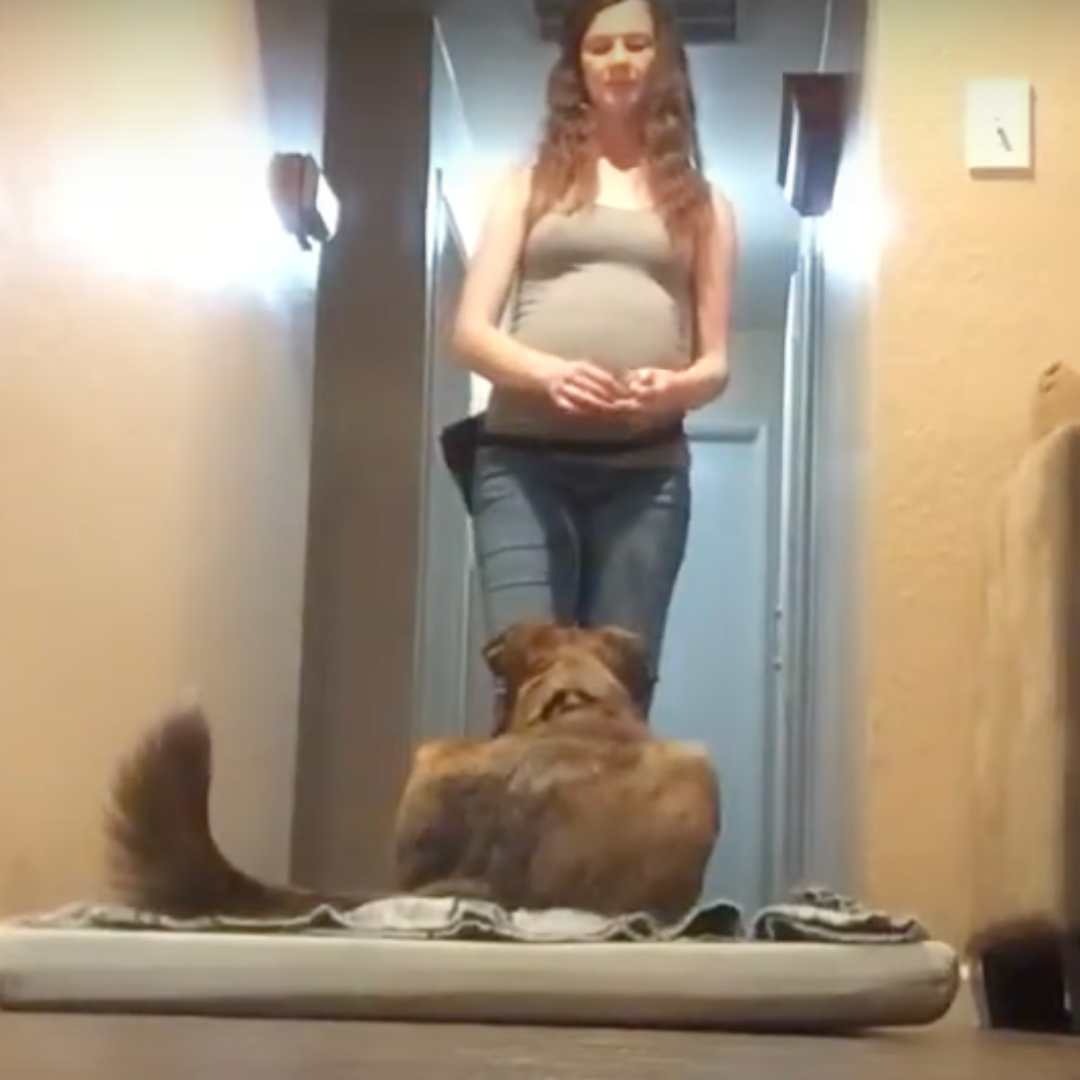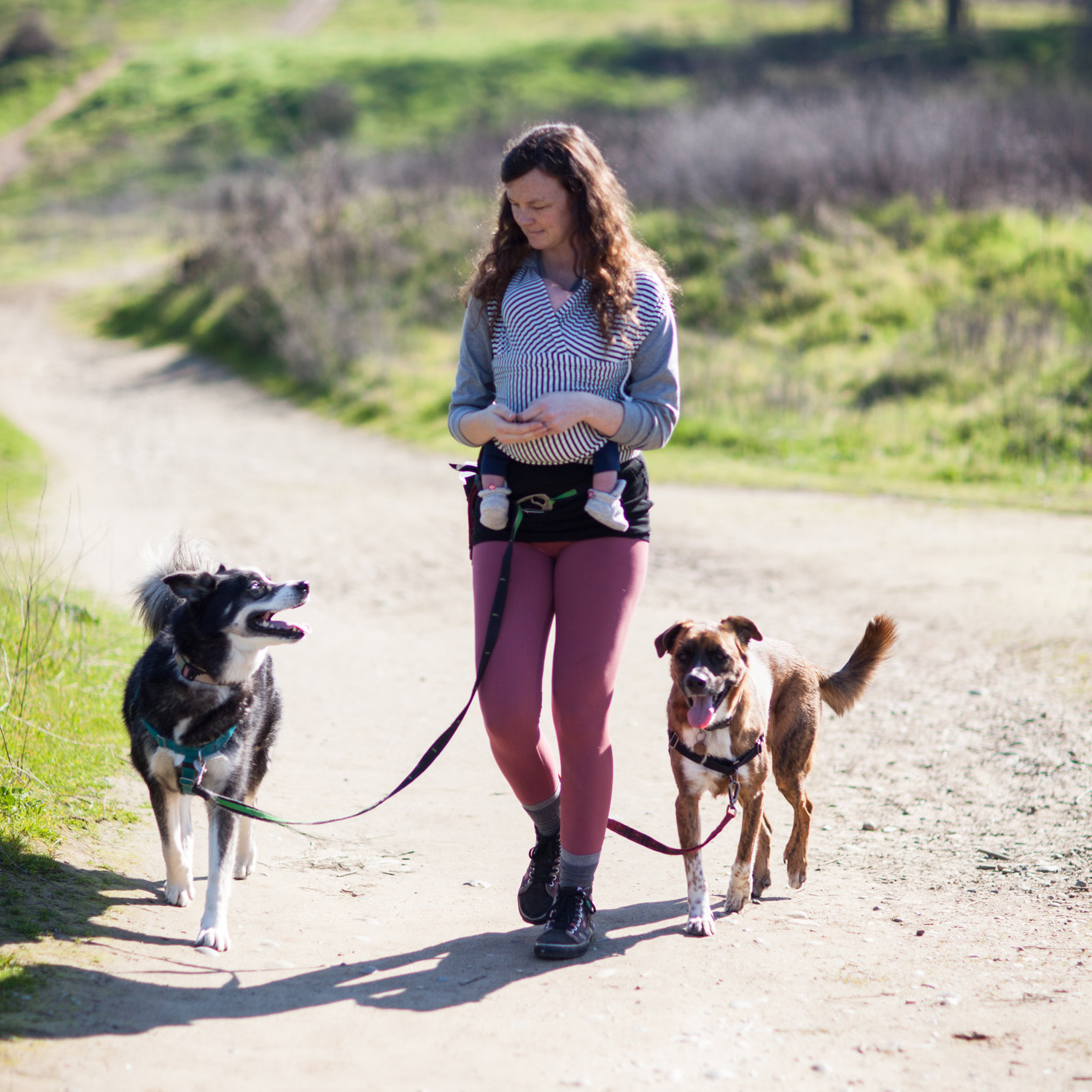Now that you and your dog have added duration to your mat training and you know your dog can lie quietly for longer periods of time (woohoo!), you're ready to get started mat training with distance.
Distance, unlike duration, is one of the three D's most people love to train with their dog. In fact, I think many dog parents attempt to add this new skill way too soon!
How to know if you're ready to add distance... or not
Often in dog training sessions, I see students practice maybe a 5 second sit-stay and then immediately jumping into trying to turn and walk away from their dog. When their dog inevitably gets up and tries to follow them, they become frustrated. "What? I thought you knew this!" A clear sign your dog's impulse control isn't matching your expectations ... yet.
Your Dog's Plan
Stop! Don't read this long article. Instead, get everything you need to know, including all advice on Go To Mat, in a customizable step-by-step plan for your dog created by our community of certified trainers and nutritionists.
Pro tip: Learn to read your dog to know when to go to the next training level
Every certified professional dog trainer will tell you a key to successful training is to watch your dog. Your dog will tell you when he/she is ready to go to the next level for any behavior. If you begin teaching your dog distance and you haven't spent some time with my previous guide on duration, I encourage you to jump back into it. Remember - even teaching walking away from your dog when you mat train takes time, so when you begin adding distance, duration (continuing to lie on the dog bed and wait for the release cue) needs to be there, too!
Pro tip 2: Break it up - it's how dogs learn!
When it comes to stationing, there are a few variations of distance that emerge that you'll want to teach and train for separately on your way to the end goal of your desired behavior. Here are a few different types of distance your dog will experience when training this behavior:
- Holding position on the mat while you walk away
- Moving towards you but stopping on the mat when you aren't standing directly beside the mat
- Moving away from you to the mat when you aren't standing directly beside the mat
If that sounds complicated to you, imagine how it feels in your dog's world! Breaking each of these down may seem nit-picky, but in general it's important to break training down as much as possible to get to your desired behavior successfully and have fun in the process. The more specific we are about what we're working on, the clearer we can make it for our dogs!
When we attempt to work on too many things or ramp up difficulty in too many ways at once, this is often referred to as "lumping." Lumping makes learning harder, and can be frustrating and demotivating.
So here are simplified steps for each bit of learning to set both of you up for success from your initial cue word through final release word.
Go To Mat
Interested in Go To Mat? Follow topics you're interested in to customize your dog’s step-by-step plan so it's most helpful and tailored to your dog when you're ready to get started.
Here's what you want your dog to learn for a solid "go to bed" cue no matter how far away you might be:
Step 1: Teach your dog to relax on the mat while you walk away
If your dog already has a "stay" with distance, then you're ahead of the game and you can use that existing skill in this new context. If your dog doesn't have a stay, we are going to break it down into smaller incremental dog steps, so get your clicker and treats ready and let's go:
- Cue your dog onto mat
- Partially turn your body away (as if beginning to turn and walk away. Turn back, click/treat (new skill, so use high-value treats your dog LOVES).
- Fully turn your body away (without taking a step away). Turn back click/treats.
- Turn body away, take one step. Turn back click/treats.
- Turn body away, take two steps. Return to dog, click/treats.
- Repeat, increasing distance, but don't forget to drop the difficulty and throw in a few "easy wins" every few reps, too! And remember to reward your dog for all this new learning with high-value treats!
A little troubleshooting for common sticking points ...
The turning around part is where a lot of people get stuck. It's natural to want to jump straight to moving away, so they may end up backing away while maintaining eye contact with their dog. This is fine if you only want your dog to be able to hold a calm stay on the mat while you back away and maintain eye contact. But that's not usually real life! If you want to be able to count on your dog's mat training skills when you need them most in everyday situations, you want to be able to turn casually and walk away, so build that in at the beginning!
Some dogs may need this broken down into more steps (with some dogs I just begin by shifting my weight from one leg to another before actually rotating my body, for example). Some dogs may soar right through. Remember not to increase difficulty too consistently.
Your Dog's Plan
Stop! Don't read this long article. Instead, get everything you need to know, including all advice on Go To Mat, in a customizable step-by-step plan for your dog created by our community of certified trainers and nutritionists.
Step 2: Teach your dog to stop on the mat when you're at a distance
This is about learning the "place to be" and has less to do with you and more to do with the mat. It's tricky because most dogs naturally orient to us, especially during training. You want your dog to be totally clear about the trigger for getting all these treats. It's about getting on the mat!
Give me an example
It definitely helps if you've been practicing "changing the picture" by moving around the mat so that your dog is practicing coming at it from different angles (go back to the previous guide for more on that). You want your dog to make a direct association with the mat and the high-value treats, to understand that staying on the mat is magically rewarding and has no connection to where you are.
Try this
Practicing this is simple - it's exactly the same as how we teach the behavior to begin with: toss a treat away, past the mat, cue the dog onto the mat, click, toss the treat away again. But this time, move just slightly away from the mat. Repeat, gradually increasing distance, but as in the above exercise, sometimes decreasing the space between you, too.
The key to this exercise is to take it sloooow. If you start by taking three steps away from your dog, he/she will likely cruise over the mat or lie on it in some weird way with just their buns touching and the front half of their body draped beyond it.
Tip on timing
The second thing to keep in mind is to increase your distance while your dog is eating the treat. If you move once your dog has already finished the treat and is looking right at you, your pup is going to be tempted to follow the momentum of your movement and move with you. Better to be still, stand quietly, and just slightly further away for these initial sessions.
Step 3: Teach your dog to move away from you to go to the mat
You can see me practicing this element of adding distance to mat training with my dog in the video here. Once again - take it slow! You're teaching your dog to move away from you and go to the mat, essentially creating distance from you. Dogs are more accustomed to having us being the ones to position them, move away, then come back to them to reward them. Bonus treats to your dog for learning both ways!
Try this
For this exercise, cue your dog onto the mat, click, then, instead of tossing the treat away, offer the treat directly in front of you. So your dog will be right near you.
Once he/she eats the treat from your hand, cue "go to bed" or "go to mat" again, and move back ever so slightly. Click, offer the treat in front of you again, bringing your dog to you. Each time, your dog will be going back a longer distance when you cue " go to mat." Continue increasing distance while adding in some easier reps where you move closer to the mat again.
Manners
Need more advice? Browse all guides in the Manners Channel on topics like Go To Mat, Food Manners, Party Manners, Stay, Public Manners, Travel Manners, and Basic Manners - created by our community of certified experts for you and your dog.
And there you are -- you've added distance to your dog mat training!
Have fun practicing with your dog and remember to keep each session short, break whenever you've both had enough, congratulate yourselves and let it rain treats!
Learn how to advance your dog mat training with the addition of distance, the second of the three D's (duration, distance, distractions).
Choose how you'd like to view this guide's video.

Next up in the Manners Channel on Dogly
Congrats! You now have a dog who will happily go to his/her bed or mat and stay there for a period of time while you're at a distance. You're well on your way to a super solid "go to bed/mat" cue with your dog. The only missing piece is asking your dog to "go to bed/mat" with distractions going on, which we'll cover in the next guide here.
If you have any questions or want to share sticking points, jump over to the Community discussion in the Manners Channel or sign up to work with me 1-1 if you need more personalized help.
See you in our next session on "go to bed" or mat training as we add distractions!

